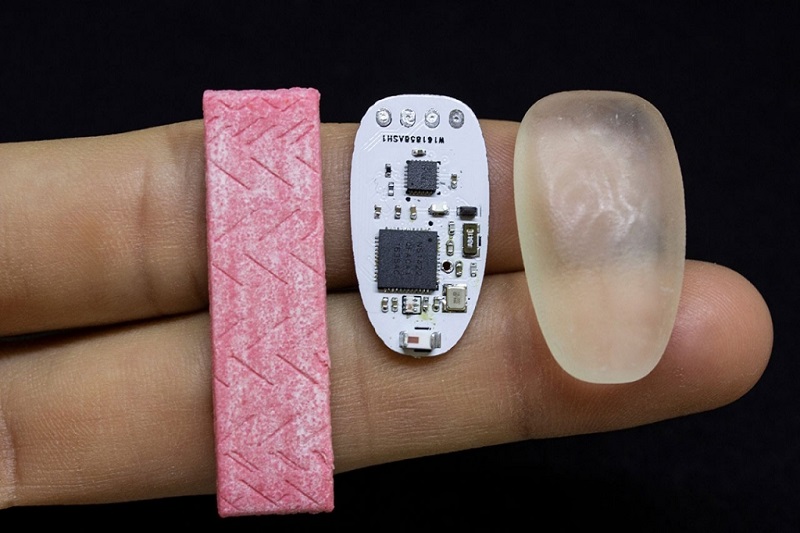
Imagine having a device that feels like a piece of chewing gum, with dimensions similar to it, which allows people to answer the phone by simply biting down to it.
According to a recent press release, Chewit is a tiny piece of technology that is encased in a flexible custom made PCB that is popped in the mouth.
It is a novel interface with the technology capable of answering the phone.
The interface allows the user to have a discreet and hands-free interaction with their phone, their computer, and their smartwatch, among others.
It is developed by the Augmented Human Lab team at the Auckland Bioengineering Institute (ABI) of the University of Auckland, in New Zealand.
Innovative Technologies
Associate Professor Suranga Nanayakkara led the team that developed Chewit. He made international headlines in recent years for his work with the FingerReader.
The FingerReader is a prototype device worn on the finger that allows users to point at words, such as those on the spine of the book or in a restaurant menu, which is then translated to voice.
Since he moved from Singapore to New Zealand, the Associate Professor and his team have produced a number of innovative technologies.
Aside from Chewit, another innovative technology that they have developed is the GymSoles.
It is a pressure sensitive insole that vibrates and gives users vibrotactile feedback to help them maintain the correct body posture.
As reported, GymSoles was tested and shown to be effective on people performing certain exercises such as squats and dead-lifts, to help them maintain the correct centre of pressure.
Assistive Augmentation
Moreover, the Associate Professor implements an almost philosophical approach to technology.
He aims to address a mismatch between what technology has to offer and the innate human behaviour.
His research is focused on developing technologies that are more responsive to innate human behaviour instead of obliging humans to adjust to the requirements of the technology.
The team aims to design and develop systems that can understand the user rather than having them tell the technology what to do every time.
They want technologies that can understand people much better that what the current technology does.
This type of technology, according to him, is called ‘assistive augmentation’.
Assistive augmentation is when the system understands the abilities, behaviour and emotions of the user.
In addition, it is when the system is unobtrusive and integrated with the body of behaviour of people.
He added that it should be about strengthening and extending the physical and sensorial abilities of the user, which allows them to do what they could not do before.
Assisted augmentation is meeting all three of these measures.
















